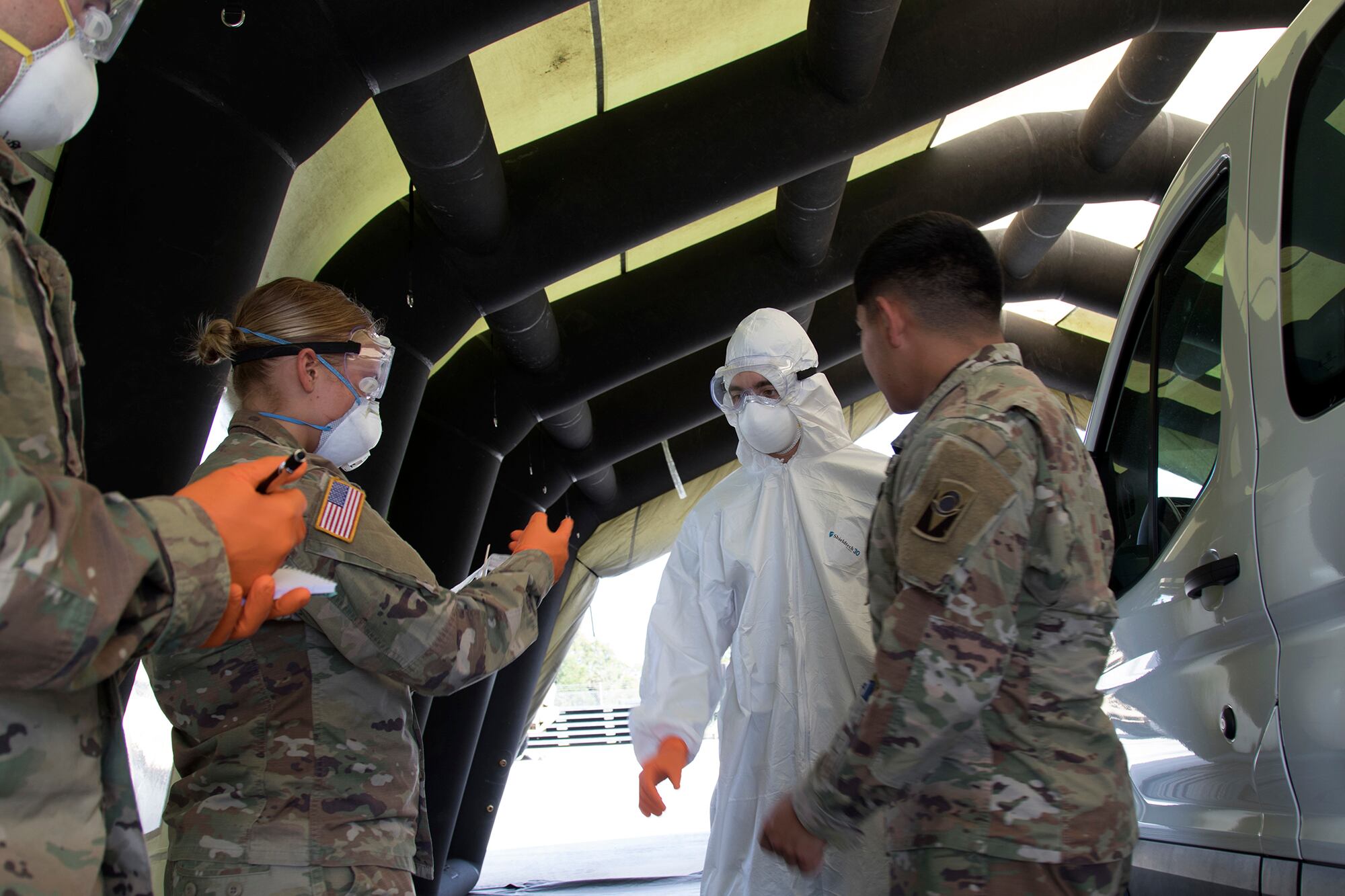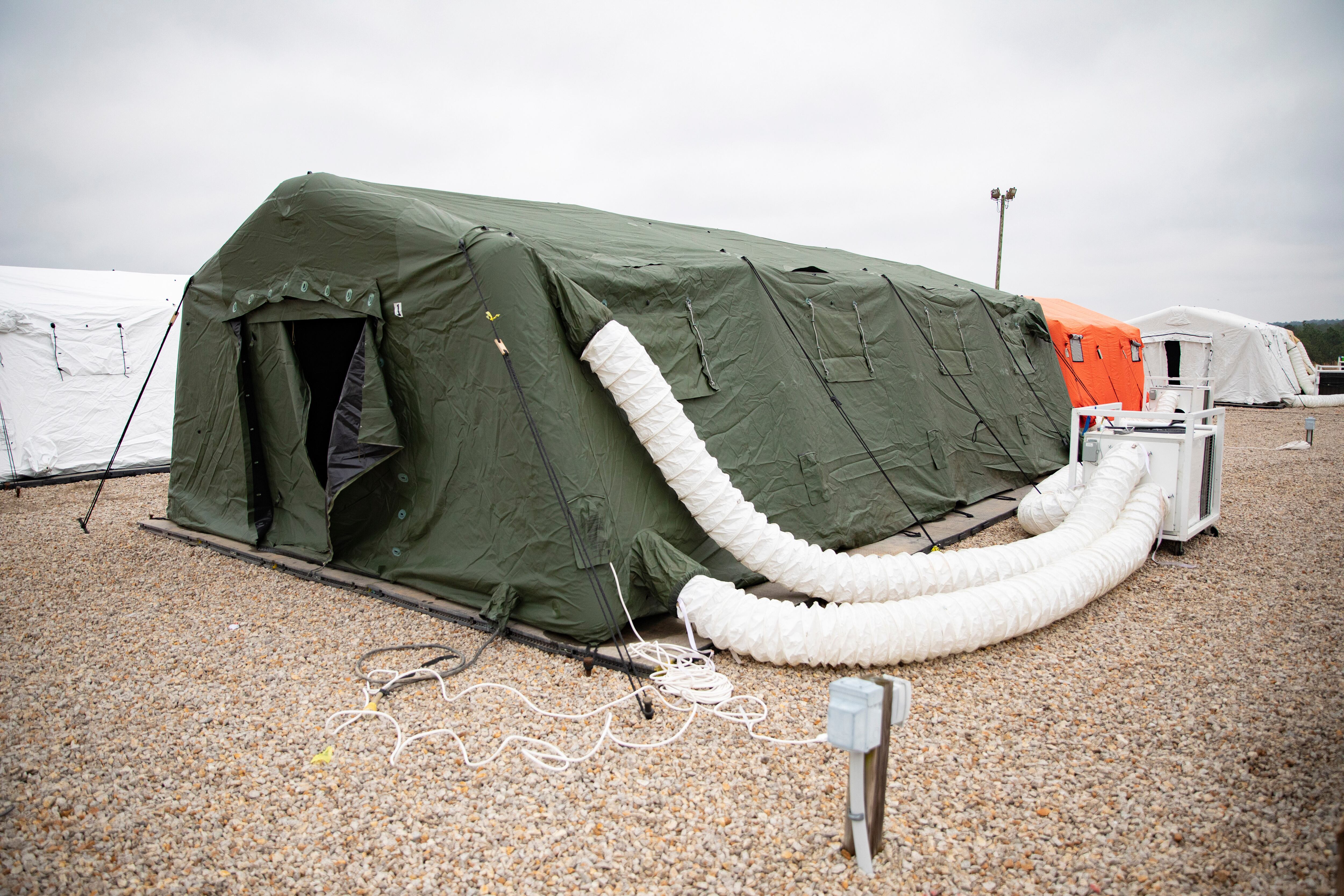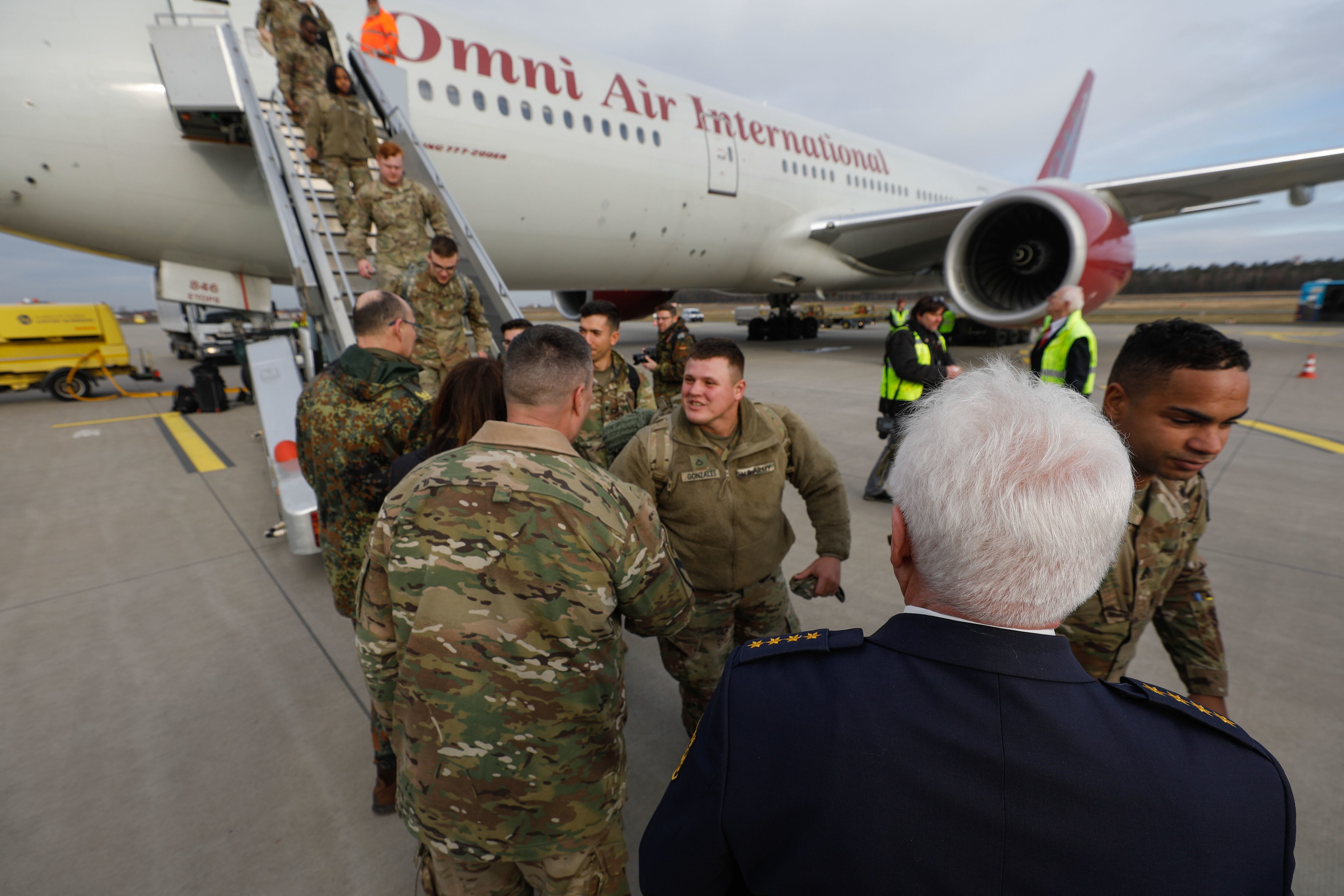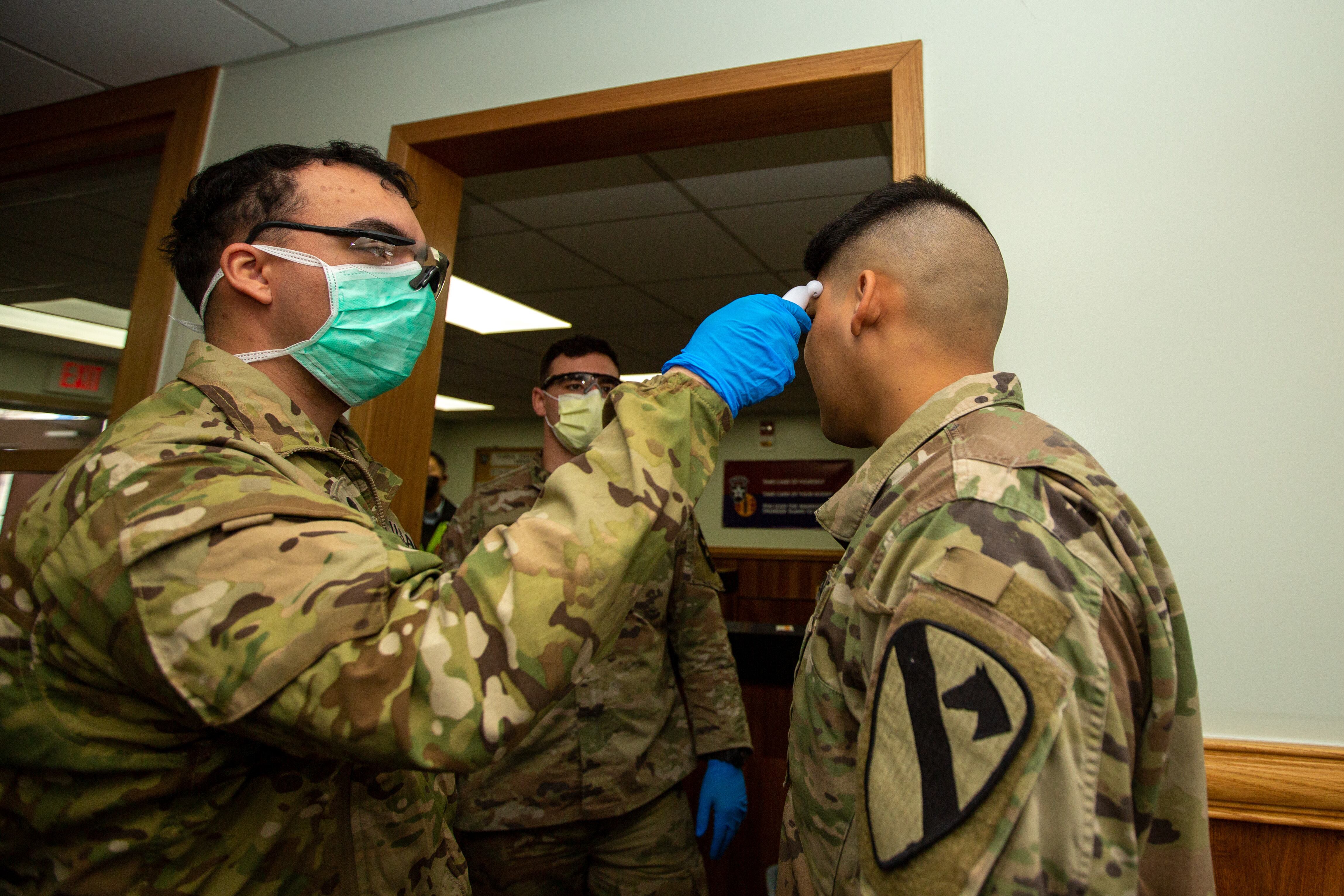The Pentagon has assured the public that it’s doing all it can to stem the coronavirus outbreak, but soldiers across the force say that guidance from experts has equated to only half-measures at their levels.
More than a dozen soldiers at installations across the United States and overseas told Army Times they’re frustrated with commanders still sending troops to the field, forcing soldiers to come to work to do mundane tasks that aren’t mission essential, and failing to test potentially sick individuals.
An Army physician assigned to a maneuver unit said the guidance handed down has been too reactive.
“Limited duty days and restricted PT are half-measures and you’re going to get half-assed results," the physician said. “That may have been great for last week, but this week, the cat’s out of the bag."
Coronavirus appears to spread easily, the Center for Disease Control warns. There is strong evidence that it can be transmitted by people who aren’t yet showing symptoms or who are only mildly ill, according to the New England Journal of Medicine.
The 1st Armored Division’s 3rd Armored Brigade at Fort Bliss, Texas, announced Sunday night that it will end its planned training and begin exiting the field due to coronavirus. But troops who’ve been training out there could’ve already been exposed to it.
“There are plenty of people out in the field that are sick and are being quarantined,” said a soldier from the unit before the announcement. “People are constantly coming and going to and from the field, raising the risk of someone coming into contact with the coronavirus and spreading it.”
A New York-based Army reservist training at Fort Bliss tested positive for coronavirus Friday. “One of my medics took care of him,” the soldier Army Times spoke with added.
Two other reservists from the same unit later tested positive for coronavirus and are now in isolation, Fort Bliss officials said Sunday. The remainder of the Army reserve unit was placed into quarantine to prevent further spread of the virus, officials added.
Army headquarters responded to the allegations in this article by stating that their commanders at every level are balancing force protection measures with maintaining readiness.
“When one of our personnel shows symptoms of the virus or tests positive, we follow appropriate medical protocols to ensure they are provided the care they need,” an Army headquarters spokesperson said. “Once we identify someone who’s positive, then we conduct contact tracing to scope exposure and notify impacted individuals."
All 50 states have reported coronavirus cases, but one of the states worst hit thus far has been Washington. That made soldiers at Joint Base Lewis-McChord, an hour south of Seattle, wonder why they were still planning to run field training.
“In terms of PT and daily battle rhythm, absolutely nothing has changed,” said a soldier assigned to 2nd Infantry Division on the joint base.
His unit will conduct expert infantry and soldier badge preparation this week, he said Saturday, meaning they’ll be alternating between different training lanes, sometimes in large groups, touching a lot of the same equipment.
“This is all taking place at a base which is in the epicenter of the outbreak in the U.S.,” the soldier said. “We have over 100 cases in the two counties that surround JBLM and where a majority of families live, and over a thousand cases throughout the rest of Washington.”

Another soldier assigned to Joint Base Lewis-McChord is finishing up a trip supporting other units at the National Training Center on Fort Irwin, California.
“There is not much health awareness out here,” he said. “We’re still crammed inside tents with hundreds of people sleeping within 2-3 feet of each other. ... Using latrines with no hand soaps in them.”
Soldiers are also crowding into lines at laundromats and dining facilities, he said. When they head home, they’ll ride in busses filled with 50 or more soldiers each, sitting should-to-shoulder for hours, he noted.
“Our unit expects us to head to Yakima Training Center, two days after coming back from National Training Center to do more training,” the soldier added.
Testing capacity at Army bases, like elsewhere in the United States, is strained by demand.
“I have a soldier who was exhibiting all symptoms, and they diagnosed him with pneumonia,” a sergeant at Fort Carson said. “He was put on 72-hour quarters. When the testing center came back open, he went to get tested but they wouldn’t because he didn’t have all the symptoms at that point.”
A soldier at Fort Riley, Kansas, said he went to the clinic with flu-like symptoms after traveling through five airports, including Los Angeles International, over a recent two-week timespan. He was told a test wasn’t necessary for him.
“I asked again about getting tested earlier this week per command guidance and they still refuse to test anyone that hasn’t traveled to a hotspot,” he said.
A medic at Fort Drum said there’s a gulf in guidance between what division leaders are saying will be done and what company and battalion commanders end up doing.
“One of our sister battalions were at the range yesterday and they had 65 soldiers in a warming room with one guy there coughing a lot,” the medic said on Saturday. "The soldier coughing also vomited in the room in front of other soldiers in close proximity so the PA decided to place everyone on quarters.”

An Army watercraft operator delivering equipment between the Hawaiian islands said he raised the issue of continuing operations multiple times. The cramped work environment for the roughly 30 people on board his boat, as well as shipping constantly between the Big Island and Oahu, could help spread of coronavirus, he worried.
“I have expressed my concern to my chain of command who has my back but once it goes to the [battalion] level it’s just brushed aside,” he said. “These are just training exercises. We’re not providing humanitarian aid."
One of the spouses of a soldier on his crew has already been placed on a mandatory 14-day quarantine, he noted.
Many soldiers said the move to minimal staffing during the pandemic hasn’t completely occurred. A Fort Carson soldier said his unit has continued to group together in confined spaces to inventory equipment for a company-level change of command.
“A few shops are staying open, some that support the whole post and others that ... don’t,” the soldier said. “It’s cold over here so we do layouts indoors in enclosed spaces that clearly violate the social distancing recommendation.”
In Kaiserslautern, Germany, an Army officer said their unit is still working full days. There has been “a lot of preaching about social distancing,” and even telework, “but none is happening,” they said.
“Two of my soldiers had direct contact with someone [whose] spouse tested positive and [it’s] business as usual,” the officer said.
That soldier pointed to a nearby unit in Baumholder, Germany, that’s doing things the right way, they said. In an email, the commander of the 16th Special Troops Battalion there clamped down on unnecessary in-office work.
“All of you have internet and the ability to conduct meetings from home,” the email reads. “If you ... specifically need to come into the office, please call and we can discuss.”

Another soldier assigned to a different unit in Baumholder has experienced more reactive measures.
He said effective policies didn’t start getting enacted until March 9, which was more than a week after the first confirmed case in the surrounding state of Rhineland-Palatinate, and more than a month after the first case in Germany on Jan. 27.
“We should have been proactive long before that,” he said, “when it was apparent how it could ravage a country.”
Testing is limited, he added. There’s a screening site at the Army hospital in Landstuhl, but few elsewhere, according to the soldier.
“My wife and I have been to the clinic twice with symptoms, but they’re only testing those who have fevers due to limited tests," he said.
The Baumholder soldier, who works in the motor pool, said that PT has moved to the squad-level to avoid assembling in large groups.
Work shifts were also split up to lessen the number of people gathered, but there’s still an hour in which the entire company is in the same area without proper social distancing. There are also no sanitization stations at any of the entrances or exits to the motor pool or offices. The bathroom is the only place to wash your hands, according to the soldier.
A post-it note on one office says that no more than four people can enter at a time, but it’s not enforced. The CDC is advising people to maintain six feet of distance between people.
“We are constantly being told by our garrison commander to only maintain [three feet] distance," the soldier said. “We all saw how quick things went downhill in Italy, but are refusing to enact the policies that could halt it."
A soldier with the 82nd Field Artillery Regiment at Fort Hood said orders were put out Thursday morning telling soldiers to conduct PT at the individual level and not to have formations. The orders also said soldiers should only work from 9 a.m. to noon.
“The only thing our ‘leadership’ followed is we didn’t conduct PT or have mass formations,” he said. “They have continued to have soldiers show up in mass to clean barracks at 0500 until 1600."

A senior Army aviation warrant officer said his unit is preparing for the possibility of being called upon to airlift coronavirus patients to local hospitals. The unit hasn’t received the masks, disinfectant and medical guidelines he said will be necessary in that role.
In lieu of masks, aircrews were told to simply limit the amount of talking near any patients and open the windows or take off the doors in flight, the aviator said; there’s also no plan handed down to quarantine aircrews if they’re repeatedly transporting coronavirus patients.
The aviator said that mid-level leaders are “paralyzed with indecision," despite the Army’s recent focus on encouraging mission command doctrine and independent thinking.
“So few leaders are willing to make informed common sense decisions to limit the risk to soldiers,” the senior aviator said. “They stall, hoping that a higher command will make the decision for them."
Kyle Rempfer was an editor and reporter who has covered combat operations, criminal cases, foreign military assistance and training accidents. Before entering journalism, Kyle served in U.S. Air Force Special Tactics and deployed in 2014 to Paktika Province, Afghanistan, and Baghdad, Iraq.





